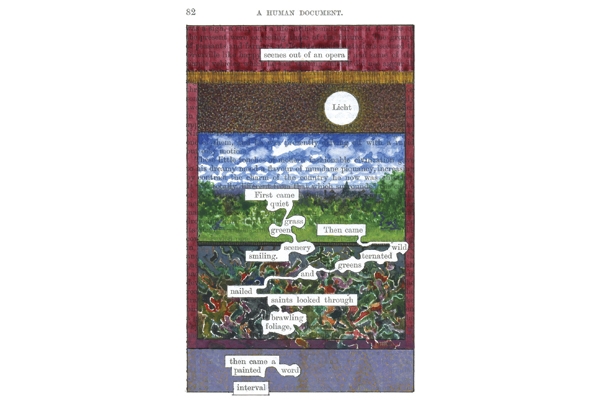In 1966, under the influence of ideas about chance, the artist Tom Phillips pledged to take as the foundation for his next work the first book that he could find for threepence. That book, discovered in a junk shop on Peckham Rye, was a long-forgotten Victorian romance in journal form, A Human Document by W.H. Mallock. Phillips set about effacing the pages of this book with sketched line drawings and gouache swathes of colour. The result was A Humument, described by Evan Anthony in the early Seventies in this magazine as ‘one of the freshest and most original pieces of art-literary work you are likely to see’.
When he started on this unusual work, which inhabits a limbo between coffee-table art book and Finnegans Wake, Phillips at first held back, working on it only in the evenings, having resolved ‘not to squander precious daylight hours of worktime’ on what he suspected ‘may be a wild, all-consuming folly’.
Forty-five years on, what could have become a dated Sixties curio has not only endured but has also anticipated successive generations of thought about image, text and meaning, right up to the iPad era.

Get Britain's best politics newsletters
Register to get The Spectator's insight and opinion straight to your inbox. You can then read two free articles each week.
Already a subscriber? Log in







Comments
Join the debate for just £1 a month
Be part of the conversation with other Spectator readers by getting your first three months for £3.
UNLOCK ACCESS Just £1 a monthAlready a subscriber? Log in